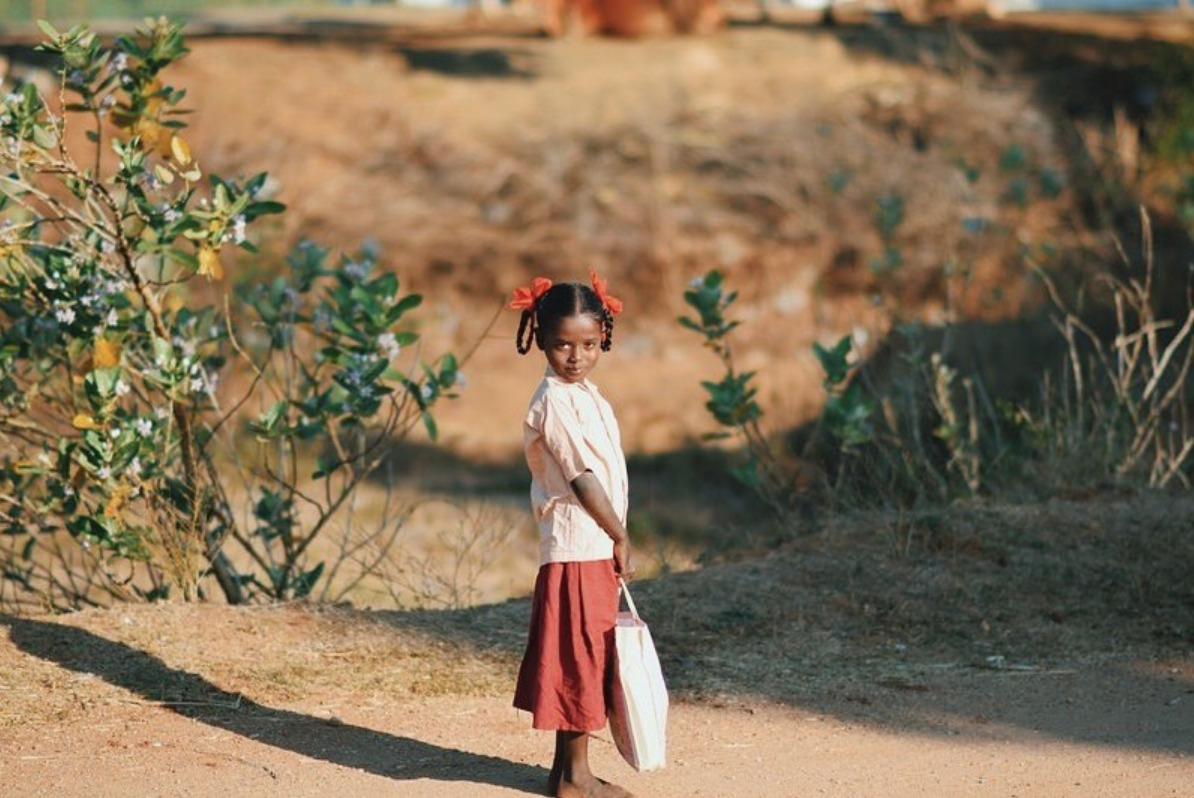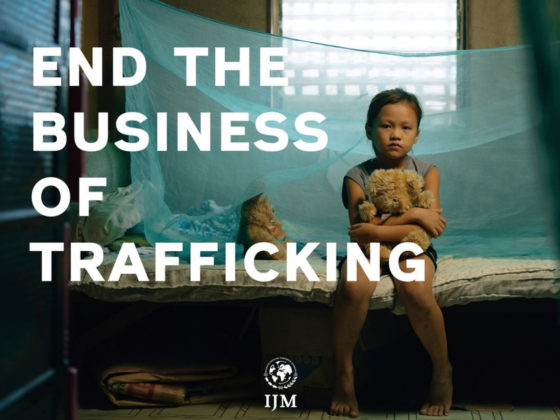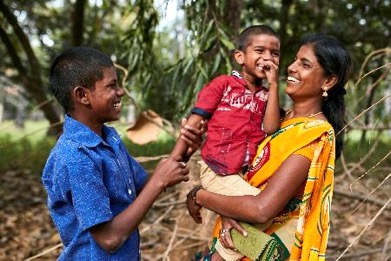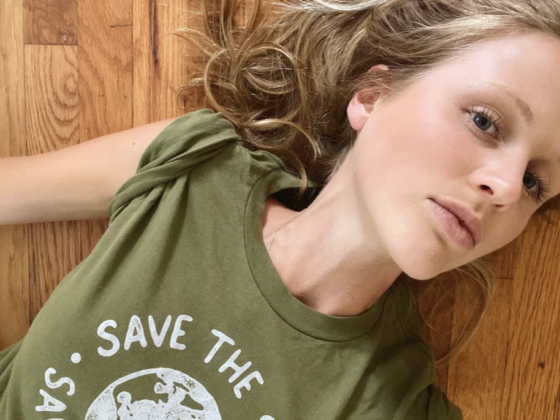
January 11, 2021 – By Tess Hardy
Today, the 11th of January, is National Human Trafficking Awareness Day. This has been observed annually since a proclamation was issued in 2011 by President Barack Obama, assigning January as National Slavery and Human Trafficking Prevention Month.
Modern slavery continues to exist as a global issue in the 21st century. An alarming number of women, children and men are at their most vulnerable due to deception, lack of awareness, extreme poverty and economic instability. Out of the 40 million enslaved or trafficked victims, over half – 25 million – are in forced labour slavery, with 16 million in agriculture, production and fashion.
In light of this year’s anniversary, I’ll be covering the issues of human trafficking in the fashion industry, and how we as consumers can do our bit to tackle this problem.
What is Human Trafficking?
Human trafficking is an unlawful form of modern slavery whereby oppressors value money over human life. They transport or coerce victims in order to benefit from work or a service – typically forced labour or sexual exploitation. In short, innocent human beings are abused for financial gain.
People are trafficked into slavery where they fear they have no choice but to stay in unjust situations, and many suffer out of sight. They become trapped in life cycles of violence through lures of false promises and debts, after accepting offers of advance payments for their labour, for example.
As a multibillion-pound industry driven by greed, modern slavery and human trafficking generate over £100 billion yearly. It’s become a lucrative business for traffickers who don’t expect to be caught due to corrupt or broken law enforcement. The whole system must change in order to protect people’s families, faith and freedom.

Exploitation in the Fashion Industry
It’s hard to believe the direct effects fast fashion has on modern slavery. Unwittingly or not, our choices for the clothing we wear create opportunities for human exploitation and, the sad reality is, we contribute to the problem.
Abusers prey on vulnerability, often amplified in the crime of forced labour under threat of punishment. Children represent an estimated 26% of all forced labour victims, equating to one in four victims being a child. Suffering goes beyond just poor working conditions; those targeted can face horrific physical, verbal and sexual abuse, whilst being locked inside confined sweatshops, exposed to toxic chemicals and hot irons. In Cambodia, mass faintings have occurred due to fume inhalation, malnutrition and exhaustion.
Out of the 170 million children subjected to child labour, many are trafficked into the textile industry. For example, over 200,000 girls have been tricked to work in clothing manufacturing in southern India. According to the US Department of Labour, forced labour is allowed in clothing and jewellery supply chains in countries known for their cotton production and garment factories.
The increasing demand for rapid design and manufacturing results in items being universally sold in bulk at extremely low prices. Large fashion retailers, such as Zara or H&M, have an opportunity to lead the way into a sustainable future, but they must be able to disclose their production resources without greenwashing! It’s inhumane for people to be harmed in the process.
Anti-slavery Organisations
There are over 50 established anti-slavery organisations, such as International Justice Mission (IJM), Anti-slavery International and A21, who help tackle the illegal practice of human trafficking, not only in the UK but worldwide.
These organisations do all they can to help stop the root causes of modern slavery. They rescue and restore survivors to safety, bring criminals to justice whilst strengthening justice systems, and scale demand for protection.
“Today’s fight for tomorrow’s freedom.” – Anti-slavery International.

International Justice Mission
Trafficking has increased since the COVID-19 pandemic. We spoke with Abigail Fedorovsky from International Justice Mission to find out more.
Their global team of lawyers, social workers, community activists and other professionals have freed more than 3,000 people since the crisis, including migrant workers illegally forced to work during lockdowns.
With the help of IJM, slavery has decreased by 86%. Over the last 20 years, they’ve freed over 50,000 people from oppression and violence, and held over 1,800 perpetrators accountable for their actions in local courts.
Stories from Survivors
We’re seeing some empowering survivors find the courage to raise their voices in order to protect themselves and others.
“I have one dream: to eradicate slavery completely from my country. I invite each of you to join hands to fight against slavery.” – Pachaiyammal, Survivor of Forced Labour and Global Survivor Leader.
In June 2020, IJM’s rescue team expected to find 22 young women trapped in one of South Asia’s garment factories, yet found 199 workers. They were pushed to work when ill or hungry for long hours and deprived of their wages. The anxious and fearful women urged to the media,
“If anything happens and we die, our bodies will be left unnoticed.”
IJM brought the case to local authorities who took immediate action to return those trapped to their homes.
Chandramma and her four-year-old son, Hemanth, were locked in a room for six months after accepting an advance of $700 to harvest silk threads as a chance for stability. The factory owner kept a dozen labourers working 16 hours each day, some for up to 10 years! Chandramma fell into her darkest space yet:
“Though we pleaded to be let out, our cries fell on deaf ears. Things got so desperate that I even thought of ending my life.”
Authorities set both of them and 12 other labourers free before filing charges against the owners. One IJM staff member on the rescue operation stated,
“Chandramma and her child would have died if we didn’t find them. Such was the horrifying remorselessness of what they had experienced.”


What can we do as Consumers?
There’s a certain responsibility for those in the fashion industry, as well as us as consumers, to bring honesty and integrity to the world of fashion. Every part of the supply chain must be held accountable with transparent and traceable production. This is where ethical fashion is fundamental in terms of educating consumers about the alternatives to consumption.
We have the powerful choice to invest in ethical, sustainable and conscious clothing, which will help end exploitation in the fashion industry. This past year has taught us how we must speak up for those who cannot speak for themselves. Responsible fashion speaks volumes as an act of compassion to free the oppressed.
To ensure an element of safety, we can demand less and seek out fair-trade, sustainable companies, or resort to recycling by reusing and reselling second-hand clothing. Contributing to anti-slavery organisations would also undoubtedly help and will, however small, be a meaningful donation, alongside campaigning for change.
“When we stand united and fight for what’s right, our world can change for us all.” – Cherida Patterson, Founder & Creative Director of CHERIDA.
Final Thoughts
Everyone has a part to play in the annihilation of modern slavery. It cannot continue to stay overlooked and outlawed. Transformation will come from an equal distribution between governments, international companies and us as consumers, who must cooperate together to uphold social and moral responsibilities.
It’s our duty and call to action, particularly on days like today, to highlight and bring awareness to the damaging issue of human trafficking in the hopes of enforcing change.
Through informed research, knowledge and education of basic human rights, we can stop the fuelling of modern-day slavery.

Tess Hardy
Tess has been awarded the industry Gold Standard for the NCTJ Diploma in Practical Magazine/Multimedia Fast-Track Journalism with Press Association Training. She is passionate writing about fashion, culture and lifestyle. You can find her on Instagram @tessrvw.









